OUR VEHICLES
From 1932 to modern day, our museum has it all.
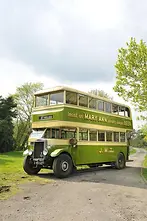
This is the oldest bus in our collection, from the year 1932 It was new in 1932 to Jersey Motor Transport and was still there when the Nazis invaded and occupied the Island in the second World War.
It has a petrol, rather than a diesel engine and has been fully restored to a very high standard.
EYE BEDFORD
This delightful little coach was new in 1937 and was first owned by Underwoods of Orsett, Essex who was (and still is) a large landowner. They owned the local Pub in the village, and used the coach to take some of their lucky punters on day excursions to such places as Clacton and Southend. Then came the War and our little coach was requisitioned by the
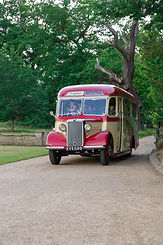
Ministry of War and sent to RAF Hornchurch where it was used to convey the pilots to their aircraft After the War it was returned to Underwoods who used it right up to the mid 1960’s. Unfortunately it suffered an engine problem and was stored in a barn and forgotten about until around 10 years when it was discovered again, but was in a poor state. It was offered to us and we carried out a complete restoration.
LEYLAND LEV 917

This bus was new in 1946 to the City Coach Company Ltd of Brentwood, Essex. Their principal route ran from London to Southend on Sea. That’s a long route, and the buses ran every 15 minutes all day long. City Coach was nationalised in 1952 and came under Westcliff on Sea Motor Services, who transferred LEV to Canvey Island and painted it red. In 1953 Westcliff was integrated into Eastern National and a
completely different use was found for LEV. It was transferred to Southend depot and converted to open top, and then spent over 20 years plying the seafront on services 67 and 68. It was eventually withdrawn in 1965 and yet another new chapter of its life began. A group of adventurous young men purchased the bus, and they travelled in it to many far flung places over the coming years. Eventually their adventures came to an end and LEV was sent to Canvey Bus Museum for a well earned retirement. But that’s not the end of the story, because in 2020 Ensignbus asked the owners if they would consider loaning LEV to them so it could run on service 68, as that was now operated by Ensignbus. So it came to pass that 57 years after having last operated on service 68 it was back in service once again - truly a survivor!
J 6332 LEYLAND
1930s
1940s
RT 624
The RT family was the primary bus for London Transport as they designed it and had 7000 of them built. The family consisted of both AEC and Leyland manufacture, with bodywork by various UK
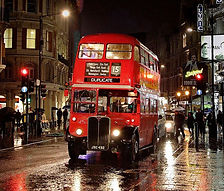
bodybuilders. RT 624 spent its entire LT days in the central area painted red, and its claim to fame is that it was the very last RT in regular passenger service with London Transport, and was withdrawn in 1979. We have purposely left the interior as it was when withdrawn to illustrate how a ‘working’ bus was when in service. RT 624 served London for 31 years - a very creditable performance.
BRISTOL LODEKKA YDL 318
This bus is a Bristol Lodekka from 1962, so called because it has an overall height of 13’9”. There have been many variations, including rear entrance with open platform, or with doors, a front entrance version known as an FLF and various lengths, ranging from 27ft to 33ft. Additionally there have been various engine options including Bristol’s own
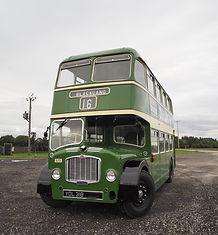
BVW Gardner 5 and 6 cylinder and Leyland 0600. There were options on gearboxes too, including 4 speed with or without overdrive and semi automatic too. Our bus had a comfortable life trundling around the Isle of Wight until being withdrawn and entering preservation and settling in with us.
A112 KFX
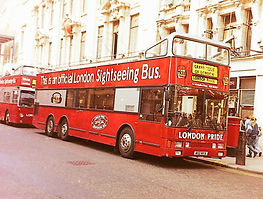
This bus is an MCW Metroliner, and it started off in 1984 as a covered top luxury coach, operating mostly on express services from the West Country to
London for Shamrock & Rambler Coaches. The Metroliner was not exactly a success though, and the batch was prematurely withdrawn. At that time Ensignbus operated the London Pride Sightseeing service, and could see the potential of being able to operate the type in London in open top format and with standard bus type seats rather than the luxury coach style fitted for the long distance express services it had previously been used on. There were mixed views; some thought the length at 12m would not prove viable in London, others stated that it was only the roof that kept the body stable. Ensignbus were unperturbed and carried on with the conversion, with the first one emerging with a whopping 67 seats upstairs! When you compare that with a standard 2 axle bus with an average of 43 seats it is easy to understand why Ensignbus were keen to see if it worked. Well, it did! A total of 21 Metroliners were converted and proved very popular with the public. Seating was reduced marginally to 63 to afford a little more legroom, but apart from that nothing had to be changed. The buses coped easily with London Traffic, and the bodies didn’t fall apart - and the first bus to be converted is here.
1960s
1980s
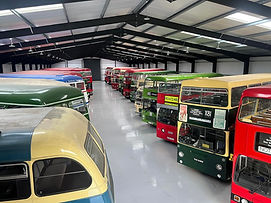
These 6 buses are only a very small sample of what we have in our collection- we have over 60 in total. Take a visit to Zero2 Bus Museum and you can discover that every bus has a story.

